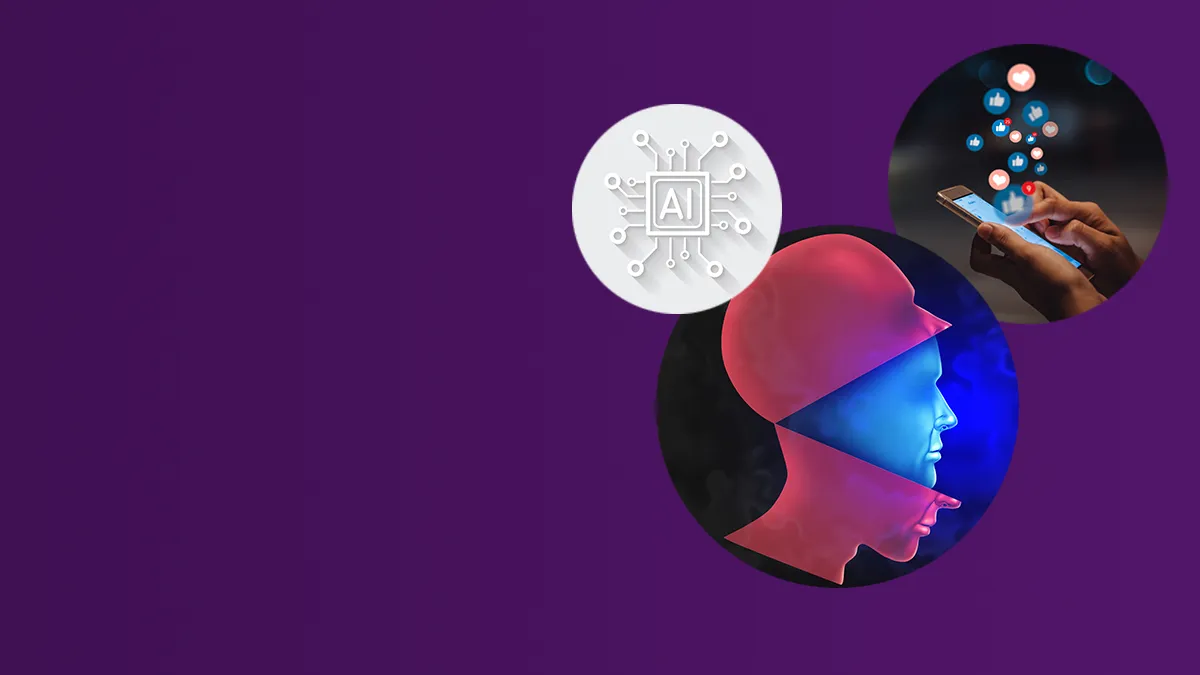
- Ransomware
- 8 min read

The exponential growth of financial activity and commerce taking place online has led to an increase in cyberthreats to businesses of all sizes and industry.

Accenture Research reveals that 70% of business leaders feel their cybersecurity risks are increasing. With complementary data from Varonis revealing that only 5% of companies and their data is properly protected. The strength of an organisation’s cybersecurity protocols and secure behaviours across the workforce are key to maintaining organisational reputation and staying safe from nefarious individuals.
Unfortunately for business leaders, CISOs (Chief Information Security Officers), and DPOs (Data Protection Officers), cybercrime levels are only on the up with new emerging cyberthreats of the future requiring fresh and innovative solutions to combat them. McKinsey data forecasts a 15% increase in annual cybercrime costs for both defence and response, with total dollars spent worldwide expected to hit $10.5 trillion by 2025!
The cyberthreat landscape has always been multifaceted, as well as complex and ever evolving. As a result, we need to be aware of the threats on the horizon, to stay one step ahead of cybercriminals.
In 2019, 72% of people were unaware of what deepfakes are. However, in the years since, deepfake technology has increased in popularity and this trend only looks like continuing. Deepfakes can be videos or audio files of a person in which their physical appearance and/or voice has been digitally altered so that they appear to be someone else, typically used maliciously or to spread false information. Cyber criminals may use deepfakes to create false narratives and gain corporate access from a trusted source. Deepfakes can increase the effectiveness of phishing, vishing, and metaverse attacks. Deepfakes can also be used to commit identity fraud in both private and public circles, which can have massive ramifications for company finances and social reputation.

VMWare’s Head of Security told SecurityWeek that some cybercriminals will be moving from ransomware attacks to deepfake attacks as they can use these to manipulate the market as a different means to financial gain. For example, a cybercriminal could deepfake an unsavoury video of a company’s CEO to influence the company’s shares/wealth by damaging the reputation of their leadership.
Furthermore, deepfake production tech is improving at a faster rate than deepfake detection with Europol warning: “Experts fear this may lead to a situation where citizens no longer have a shared reality or could create societal confusion about which information sources are reliable; a situation sometimes referred to as ‘information apocalypse’ or ‘reality apathy’ … where it becomes particularly difficult, however, is when deepfakes are used against society to manipulate a crash in share value for a corporation. This process is further complicated by the human predisposition to believe audio-visual content and work from a truth default perspective.”
We are already seeing deepfake attacks. A Chinese bank manager was tricked by the deepfaked voice of his CEO, which resulted in him transferring a whopping $35 million out of the bank and to the deepfaker. Whilst the first ever recorded deepfake cyberattack also saw a cybercriminal deepfake a CEO’s voice over a phone call, tricking employees into unknowingly transferring £200,000 to cybercriminals.
2. Bot-based social engineering

Normal social engineering exploits human error, weaknesses, and trickery to gain access to corporate information on otherwise protected networks. A cybercriminal will use emails, social media or even phone calls to gain the trust of an employee and then take advantage of their newly gained access. Now, imagine that with bot-based social engineering attacks, a cybercriminal could use a programmed AI voice to call millions of would-be targets to initiate a more invasive form of social engineering. There is evidence to suggest that such advanced technology could be used rampantly within the next decade.
3. Quantum computing attacks
The rise of quantum computing, extremely fast computing, poses a massive risk to companies. Quantum computers running hacks and ransomware attacks can break encrypted algorithms on online services, communication platforms and financial portals. Hackers will not use extensive quantum attacks on company assets that they are unable to penetrate and draw a financial return from, as huge operational costs come with quantum computing.
4. Account takeovers

Another growing cyberthreat is account takeovers. Riskified data reveals that at least 17% of consumers have had one of their accounts taken over by a cybercriminal. Riskified further reveals that there have been five times as many account takeover attempts in the last three years when compared to the same timeframe prior. Account takeover attempts are only set to increase in number and veracity.
The most popular targets for account hijacking are ecommerce profiles, such as Amazon and eBay accounts. This is because these ecommerce platforms have sacrificed some level of security to provide their users with frictionless online shopping. As a result, hackers often find these accounts easy to crack.
5. Social media bot reputation attacks
A massive threat many of our clients are worried about are social media reputation attacks backed by waves of fake/bot accounts. According to research by Carnegie Mellon University, half or more online accounts actively posting are likely to be bots. The university’s research reveals that bots have been used by groups with alternative goals to attack vaccination efforts, women’s rights movements, and diversity initiatives. Carnegie University also notes the use of bots to damage companies in other sectors such as the entertainment industry (see: 13% of accounts behind #SnyderCut movement were fake bot accounts), which has caused massive financial and reputational damage. A dedicated and coordinated social media attack has the potential to truly damage a business’s reputation.
6. Ransomware booms

Whilst phishing has and remains the most common cyberattack and threat for companies, ransomware has been booming! A recent Allianz Risk Barometer survey reveals that companies in 89 countries are more concerned about ransomware attacks than they are about supply chain attacks or even natural disasters. Cybercriminals understand that ransomware attacks are far more efficient than social engineering attempts and offer a direct financial benefit for the cybercriminal.
Furthermore, ransomware attacks are getting more sophisticated, and Ransomware as a Service (RaaS) packs can be readily purchased on the dark web.
We have written extensively about how the shift to remote working has opened new attack surfaces for cyber criminals. With remote working, employees and employers are now aware of the following problems but must remain savvy to them for the foreseeable future:

At TSC, we live, breathe, and dream about raising cybersecurity awareness standards and changing security behaviours. We keep our clients and partners informed and safe. We constantly keep our ears to the digital ground and are consistently talking about emerging threats in The Insider.
Cybersecurity does not come with one silver bullet that can rid you of your enemies in a single swoop. It is a holistic process that involves educating your employees, implementing multiple technologies, and understanding emerging threats.
It is essential that security managers and employees are aware of threats such as bot attacks, deepfakes, and how social media attacks can be used against them. Cybersecurity and staying safe online should be front and centre for all employees and employers!
If you would like more information about how The Security Company can help deliver security awareness training, raise awareness, increase security skills, and establish a secure culture, or how we can run a behavioural research survey to pinpoint gaps in your security culture, please contact Jenny Mandley.



© The Security Company (International) Limited 2025
Office One, 1 Coldbath Square, London, EC1R 5HL, UK
Company registration No: 3703393
VAT No: 385 8337 51


